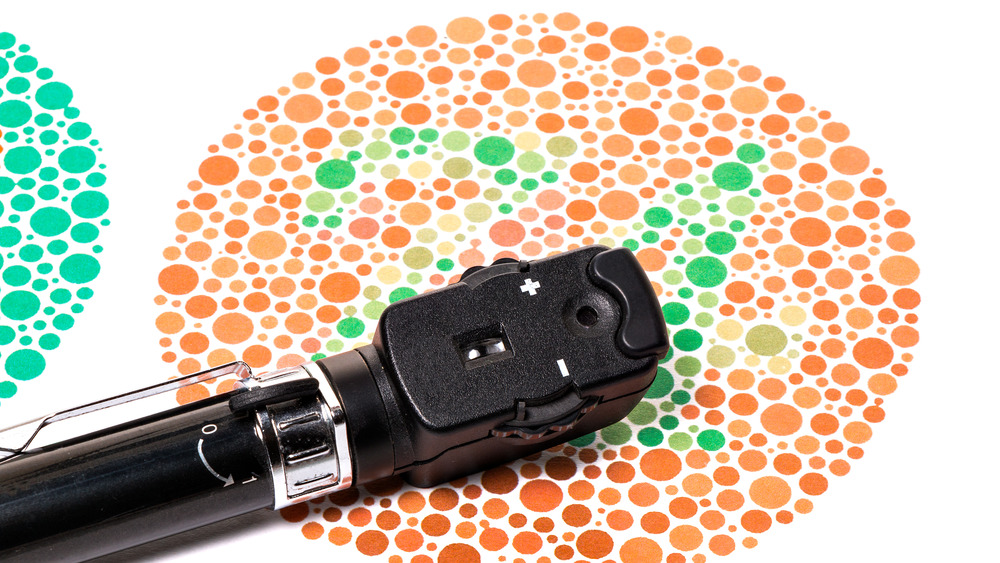Can Only Men Be Colorblind?
We learn the primary and secondary colors early in life. And while most of us can perceive and identify colors with no problem, there are those who have difficulty. Some people see dark gray instead of red or confuse blue and violet. These are forms of color blindness, also known as color vision deficiency. Color blindness affects mostly males — one in 12, or 8%, have it — but females can have it as well, although at a much lower rate (1 in 200), per Healthline.
A study conducted in 2014 of preschool children in Southern California found that 1.4 percent of Black males, 2.6 percent of Hispanic males, and 3.1 percent of Asian males had color vision deficiency. Among females, 0 to 0.5 percent were colorblind across all ethnicities.
Color blindness is predominately genetic, which means a person is born with it. Remember the X and Y chromosomes from biology? Here's a refresher to help you understand why males are more likely than females to be colorblind. The gene for the most common form of color blindness (red-green) is an X-linked recessive gene. A female must inherit two X chromosomes — one from mom, one from dad — that carry the gene to be affected, while a male's only X chromosome — from mom — needs to carry the gene for him to inherit color blindness. Therefore, there's a greater chance of a male being colorblind because he only needs one affected X chromosome to have the condition.
Causes and types of color blindness
There are several types of color blindness: red-green, which means the person has difficulty differentiating red from green; blue-yellow, which makes it hard to tell the difference between blue and green or between yellow and red; and complete color blindness, a very rare condition in which the person perceives no colors at all. Men are more likely to have the red-green type, while the blue-yellow variety, which is passed down on other chromosomes, affects men and women equally.
So what's going on in the eye when a person is colorblind? The eye has photoreceptors, or cells called cones, that perceive the entire spectrum of colors. In normal eyes, cones contain several kinds of pigments, each of which reacts to different wavelengths of light. Some people have cones that are missing a pigment, which means their eyes can't perceive a certain wavelength of light, or color.
While color blindness is typically inherited and becomes apparent during childhood, it can sometimes develop in adulthood due to other problems, such as injury to the eye or optic nerve, diabetes, cataracts, cancer, or damage to parts of the brain that process color (per WebMD). A variety of medications may also affect color perception, from those used for heart problems to those that treat mental health disorders (per the Mayo Clinic). Even aging affects how colors are perceived.
If your color vision changes, see an ophthalmologist. Impaired color perception due to an underlying disorder or medication may be corrected with treatment or switching to a different drug.


